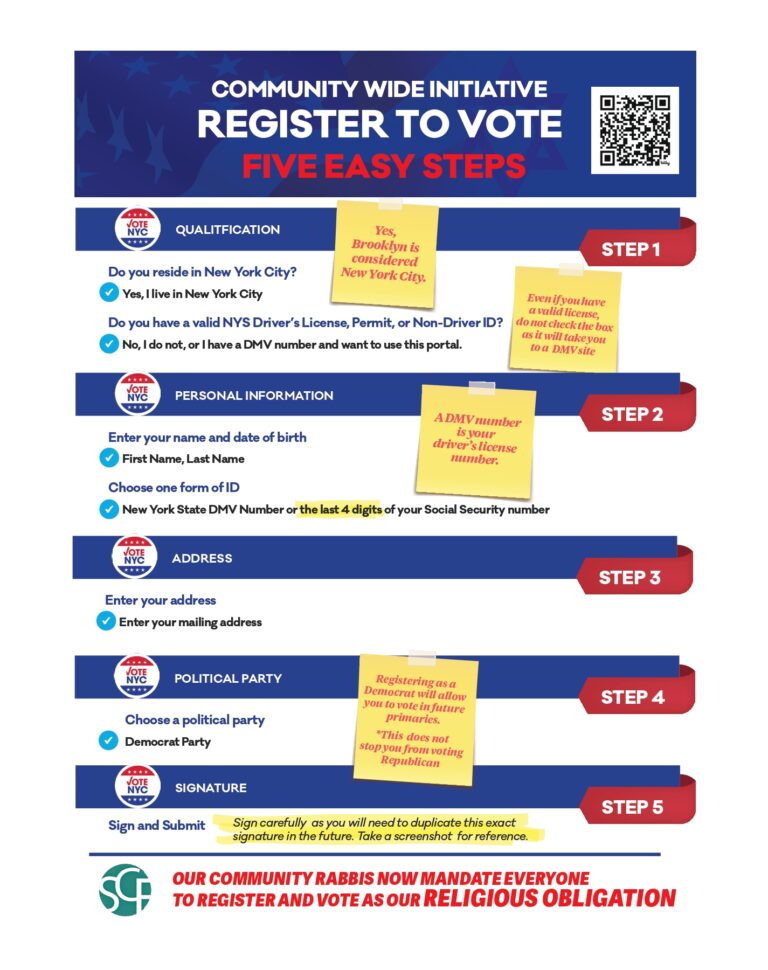The day has the power to energize real change and help a person become unrecognizably different.
Rabbi Yehonasan Gefen
The spiritual forces operating at moments of beginning are unique. “Hakol holech achar harosh – Everything goes after the beginning” – the entire course of any process is determined by its beginning. This is because a beginning is a conception, and conception represents the laying down of the genes that are the blueprint for everything that is built later. The spiritual rule is that the closer something is to the moment of conception, the more potent and critical the forces: a small injury to the human body may not be of major significance for an adult. However, a fetus during its development is much more sensitive to such an event, and a minute change to the genes may have the most far-reaching results imaginable.
The Importance of New Beginnings
At the moment of conception all details are being coded most potently; it is therefore the most critical moment. No subsequent moment can ever have the intensity and significance of that first moment. The flash of conception contains everything. All later development is simply a revelation of what was created during that first flash.
Rosh Hashanah is the conception of the year and the next ten days are its gestation. That is why these days are so critical to the whole year. That is why a person is judged for the entire year as he appears on Rosh Hashanah – the personality as it exists then is the core. It will take supreme effort to change later. Change on Rosh Hashanah is much easier – one can manipulate the “genes” of one’s character then. People of spiritual knowledge take extreme care to live as perfectly as possible on Rosh Hashanah – the year is being conceived.
Rosh Hashanah’s Unique Energy
What is the source of this special energy? The first Rosh Hashanah ever, which of course must represent its true nature most powerfully, was the day of the Creation of man. That day of Creation was the world’s first Rosh Hashanah, and its climactic event was the Creation of the human. That is why this day always retains its power to re-create man. When we genuinely and intensely decide to elevate our personalities on Rosh Hashanah and become inspired to live the coming year as higher beings, we are using the day’s deeply rooted energy as the day of human creation. The day has the power to energize real change and help a person become unrecognizably different.
There is an idea that Adam was created at the very place that would later be the mizbeach (altar) in the Temple. “Adam mi’makom kaparato nivra – Adam was created from the place of his atonement.” His very first moment of life was generated from earth that was gathered from all parts of the world, but that was concentrated on the one spot that would later become the site of sacrifices – that activity that most powerfully atones and brings man close to the Divine. Adam’s moment of creation is at once the most intense newness possible and also contains the element of the most intense change possible – from sin to atonement, which is really new creation itself. Hence, the unfathomable power of Rosh Hashanah to help us to become new. Little wonder that the mystical custom is to minimize sleep on Rosh Hashanah.
Significance of the Order of the Tefillah
The service of the day reflects this idea of reaching for the root. The order of prayer is based on Malchuyot (kingship), Zichronot (memory), and Shofrot (shofar-blowing).
Kingship
Malchuyotrepresents the effort of renewing the root of all Creation and all service – establishing that Hashem’s rule is absolute and primary. Before accepting the yoke of specific mitzvotwe must accept Hashem’s kingship in general, as expressed in the famous mashal (parable) of a great king who was asked to decree laws for a country. The king agreed only on condition that the people first accept his sovereignty over them. Only then would his laws be binding and meaningful. The root of Creation is Hashem’s Kingship, and so too is the root of all spiritual growth. This realization is the most primary of all on Rosh Hashanah, and it requires a delving into the deepest level of ratzon (desire) during the prayer service to reach the consciousness of and desire for Hashem’s complete rule.
Memory
Zichronot represents the idea of remembering in true spiritual depth the points of origin of the world and of the Jewish people and its destiny. This deep form of memory is a re-entering of the male phase of new conception – to go back to the initial flash or spark and re-live it vividly and literally. The root of zachor, “remember,” is identical with zachar “male.” The connection should be obvious. Maleness is exactly that: a carrying over of the distilled essence of all previous generations in a seed that will form the next generation. The seed is a “memory” of the past. In fact, the words “memory” and “seed” are numerically equivalent in Hebrew. The work of memory, re-living the flash of creation, is perfectly fitting and necessary for Rosh Hashanah.
Shofar-Blowing
Shofrotindicates, along the lines we have been discussing, reaching for the heart, reaching for the root of the neshama and the personality. The essence of the shofar is that it has a voice but no words. The mystics explain that the voice is the root of speech and contains far more than the individual finite words. Words may convey information, but the voice conveys the essence of a person. This is why prophecy is referred to as “voice,” not words: when Hashem tells Avraham to listen to Sarah’s prophetic advice the verse says: “Shma b’kola – Listen to her voice,” not “Listen to her words.”
Hashem tells the prophet: “Kra b’garon, al tachsoch – Cry out in your throat, do not hold back.” Prophecy is not from the mouth, the origin of words, but from the throat, the origin of raw sound. The blessing we pronounce on hearing the shofar is “lishmo’a kol shofar,” to “hear the voice of the shofar.” The shofar is raw sound, a raw cry, and that is why it has the power to open the neshama. All the words in the world cannot convey the emotion of the scream of a child in the night. The shofar is that scream.
Rosh Hashanah correctly lived should leave one supercharged. The energy achieved should be so great that the rest of the year can be lived accordingly – not as a continuation but as a constant experience of newness! Spark must become flame, and that flame must spark a new blaze, always. That is Jewish living. There is a mystical idea that being alive today because one was alive yesterday is called dying. Being really alive means that one’s life is generated today, not as a passive result of the past, but as an explosion of newness, now and always.
Spiritual Renewal
The Hebrew root ani meaning “I” has two fascinating derivatives, ana and ayin. The word ayin means “is not.” Ana is much harder to translate. It indicates an inexpressible pleading or longing as in: “Ana Hashem hoshi’a na,” the longing for redemption. These words, ayin “is not,” and ana, intense hope for the future, also mean “from where” and “to where.” When one wants to ask, “Where have you come from?” one says, “Me’ayin ba’ta?” When one wants to say, “Where are you going?” one says “Ana telech (or le’an)?” But incredibly, if one stops to consider the literal meaning of these expressions, a most inspiring depth becomes apparent: me’ayin ba’ta – “From where have you come?” literally means “You come from nothingness”! And ana telech – “Where are you going?” literally means “You are going to an inexpressibly great dimension”!
Hebrew, the language of holiness, is pregnant with spiritual depth. The simple, mundane idea of a person arriving from some previous place is expressed in common Hebrew as the transition from nothingness to his present state (yesh me’ayin – something from nothing!). In other words, the spiritual grasp of this moment is that it is relative to the previous moment, as existence compared to nothingness! That is newness! And from this moment to the next, the explosion is so great that it cannot be translated! That is the striving of a spiritually sensitive person, to generate a new inner life continually. Avraham Avinu says of himself, “Va’anochi afar va’efer – And I am dust and ashes.” Torah is never mere poetry – every nuance has infinite meaning. What is the meaning of “dust and ashes”?
The idea is this. Ashes are the bare elements left when a substance has been completely burned. “Dust” of the earth is the rich soil in which growth takes place. Avraham, who most profoundly represents the idea of newness, of being the father, the founder of the Jewish people, who forged a whole new way of living, sees himself as constantly incinerating what he has become, in order to use those elements as soil for new growth. No element of his development is allowed to continue passively, here today because it was here yesterday. All of Avraham’s being is distilled into a memory that is the nucleus for a new birth – constantly! That is the power of hiddush, self-generating newness, the source of spiritual life and growth.












